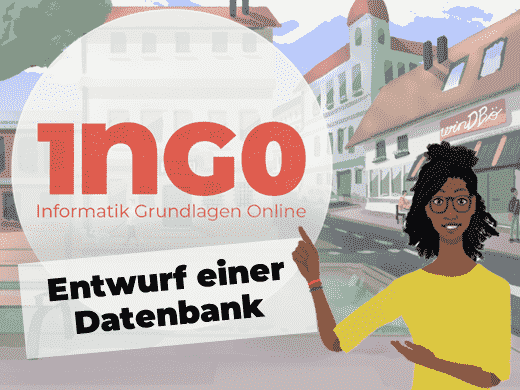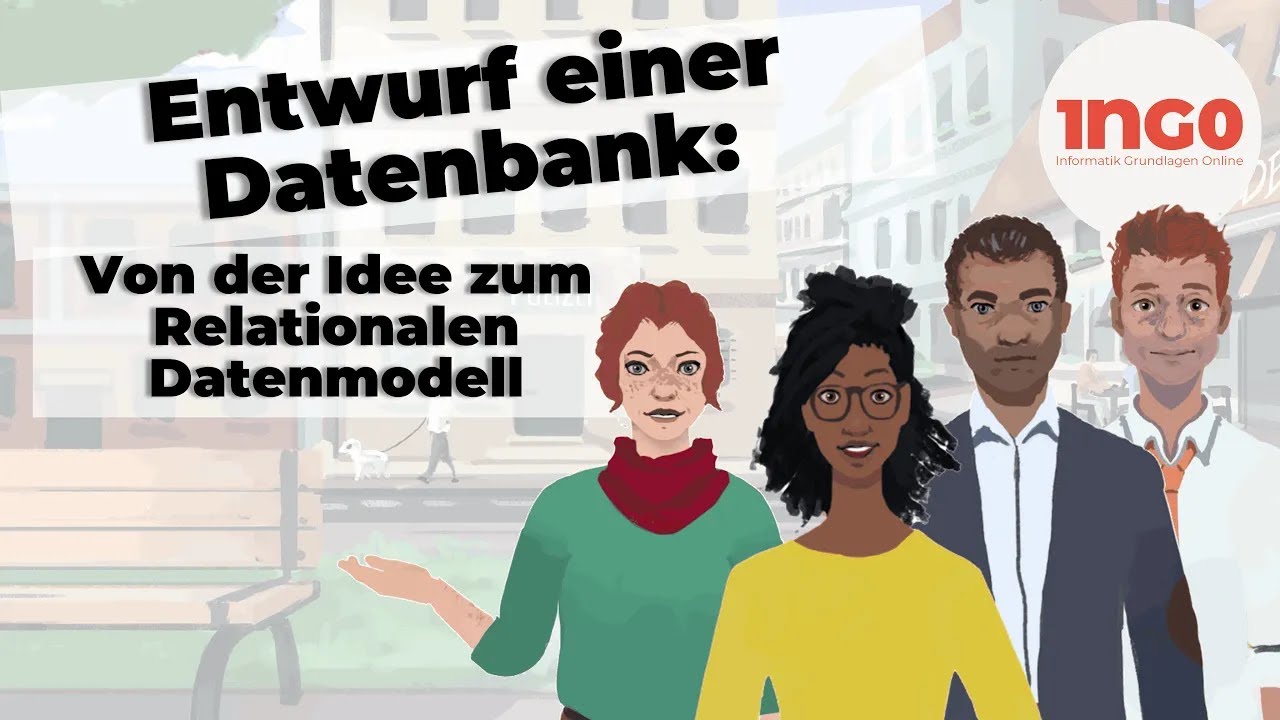


Designing a database: From an idea to a relational data model
University of Klagenfurt
Claudia Steinberger, Nina Lobnig
O tečaju
Video najava za Designing a database: From an idea to a relational data model
Opći podaci o tečaju
#Datenbanken #UML #Informatik #relationaleDatenbank #Modellierung #Normalformen #SQL
In this course, you'll find all kinds of stuff about databases - from modeling with UML to relation schemas and the quality of relational schemas and corresponding anomalies. Our content, such as videos, interactive books, PDFs, and more, is designed for everyone: pupils, students, and anyone else who is interested.
Dive into the world of databases, and learn content through stories! Animated characters explain the content and its use in concrete problem situations and take place in a police department and a local bakery and are always database-related. The contents span the entire design of a criminal and a bakery database and thus represent an essential part of the life cycle of a database. A good design lays the foundation for valuable and practicable databases and prevents problems!
The conceptual and logical design steps of this database are accompanied and attention is drawn to problems and anomalies of poorly designed databases and what determines good relational design. The idea behind this course is to get away from a typical teaching setting with recorded lectures towards more active learning and application of the taught knowledge. Videos are therefore underlaid with H5P elements to increase interactivity and consolidate knowledge right away. The associated tasks are also designed in an exciting way and embedded in stories. Help our two inspectors apply what you've already heard and show what you've got!
Sadržaj
Sadržaj tečaja
What can you expect in the course? What content will be covered?
You can get a brief overview in the video above.
Structure of the course:
The MOOC is divided into several lessons - that's six informative steps into the world of relational databases:
Lesson 1: Overview of the MOOC's goals, content, and working methods
Lesson 2: Introduction to the world of databases
Lesson 3: Domain analysis and conceptual design (semantic data model)
Lesson 4: Extended conceptual design
Lesson 5: Design of a relational database (transformation to the relational model)
Lesson 6: Quality of relational schemas and normal forms
Note: The above learning time per lesson is estimated, and results if all topics and in-depth examples (tasks) are worked through entirely in the lessons. With appropriate prior knowledge, this can be significantly shortened. It is also possible to only take single lessons or single content). In this case, however, no certificate can be provided.
Ciljevi tečaja
- Know the characteristics, architecture and data models of database systems.
- List phases of database development and briefly describe the necessary steps
- Design a database conceptually (using UML class diagrams)
- Derive a relation model from the database design
- Name guidelines for well designed relational schemas and briefly describe and fix anomalies occurring in non-normalized schemas
- Being familiar with the first three normal forms and being able to determine the normal form of a given scheme
Predznanje
No special prior knowledge is required for this course. This excludes ordinary computer skills, as well as related software (including downloading and installing software) and using web applications.
Način provođenja tečaja
Each lesson starts by outlining the key content that will be covered in the lesson and questions that can be answered after the lesson is complete. If we suggest an exercise environment in a lesson, there is also detailed information about it before things get started. Depending on the scope, a lesson consists of one or more topics.
In this MOOC, we follow a particularly applied learning approach (with a fictional police department and bakery). Therefore, topics usually start with a practical question, which is intended as a challenge and should be able to be solved after working through the topic. If the necessary competencies are already available due to previous experience, this will become clear already at this point.
For each topic, we offer learning objects that convey basic knowledge about a topic (what I should know about the topic) or show the application of this basic knowledge by means of examples (application examples) and also tasks for applying what has been learned. These can be short videos (with characters from our police department), interactive books, or texts. The order of the learning objects is technically sequential but can be consumed as needed.
Each lesson concludes with a lesson quiz. 75% of the required points are necessary for the positive completion of the lesson (and the certificate at the end).
Certifikat
For actively participating in the course you will receive an automatic certificate which includes your username, the course name as well as the completed lessons. We want to point out that this certificate merely confirms that the user answered at least 75% of the self-assessment questions correctly.
Na društvenim medijima
Voditelj tečaja
Claudia Steinberger, Nina Lobnig
This MOOC was funded by the bmbwf as part of the eInformatics@Austria project (Digital and Social Transformation in Higher Education, 2020-2024). The aim of the project is to develop MOOCs for teaching Computer Science Basics Online (1ngO) and this course covers part of the topic 'Databases and Logic', which was created by the project team from Klagenfurt.The main authors are Claudia Steinberger and Nina Lobnig, who were actively supported by their colleagues.
It is recommended to complete the MOOC on 'Databases: Discover the World of SQL' afterwards as it is designed as a follow-up course.

Sam Winter, Lara Fischer and Amar Kovač
Our fictional characters Sam Winter, Lara Fischer and Amar Kovač will guide you through the course, presenting the content both in theory and in practice as well as illustrating it with examples.
Sam Winter (pictured in the middle) is an expert in databases and introduces the various topics, explains all the important details and also demonstrates the content using examples. She often brings examples from her favorite bakery, which she supports in the implementation of a new database, as well as from the police department, with whom she also cooperates.
Lara Fischer (on the left) and Amar Kovač (on the right) are two police officers who exchange ideas with expert Sam. They apply the introduced knowledge in their daily work.
Contributors to the conception and production of the MOOC and its content (all coming from the University of Klagenfurt, listed alphabetically):
- Nicole Burgstaller
- Nina Lobnig
- Michael Morak
- Claudia Steinberger
- Claudia van der Rijst
- Anna-Sophie Wallner
- Aron Wedam
- Markus Wieser
- Andreas Bollin (didactic consulation)
The characters, backgrounds and objects were specially drawn and animated. The people involved in this:
- Jan Jancik (consulting, rigging, intro and outro)
- Stefan Pesendorfer (consulting as well as drawings)
- Wolfgang Neipl
- Nessa Heschmat
Questions or comments?
Feel free to engage in the course forum or send us an email at: 1ng0@aau.at
(Attention: The mail address contains two numbers).
Prijavi i upiši Trenutačno: 461 Sudionici
Besplatno za sve € 0.00
Partneri
 bmbwf
bmbwf
Dieser MOOC wurde vom bmbwf im Rahmen des Projektes eInformatics@Austria(Digitale und Soziale Transformation in der Hochschulbildung, 2020-2024) gefördert. Ziel des Projektes ist die Entwicklung von MOOCS zur Vermittlung von Informatik Grundlagen Online (1ngO) und dieser Kurs deckt einen Teil des Themas 'Datenbanken' ab.

University of Klagenfurt
Klagenfurt
